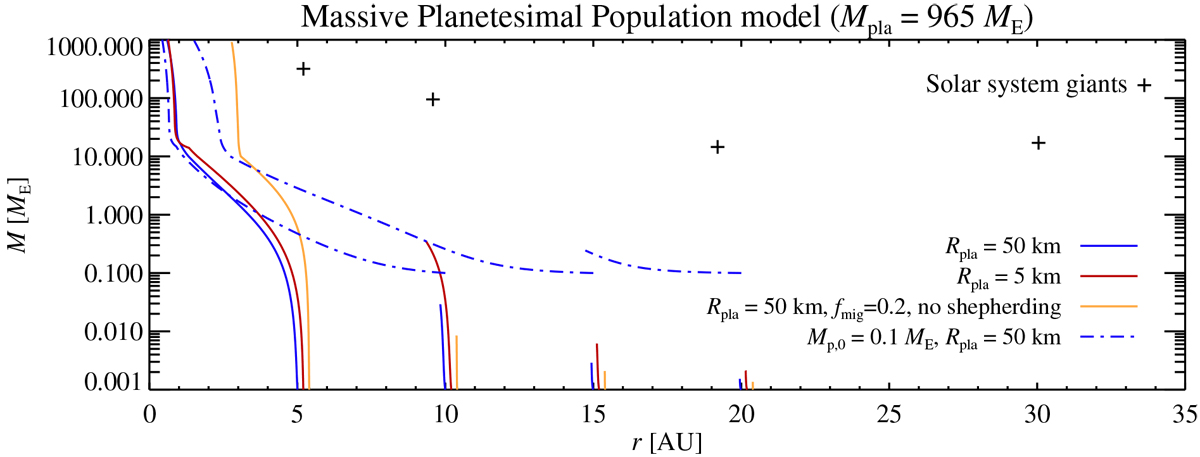Fig. 3

Growth tracks of protoplanets accreting planetesimals of two different radii (blue and red lines), with reduced migration (yellow lines) and starting with a higher protoplanet mass (blue dash-dotted lines). The growth tracks are started at either 5, 10, 15, or 20 AU. We used here the massive planetesimal population model that contains 965 ME of planetesimals formed at t = 0 and assumed that the protoplanets start to grow immediately thereafter. Growth tracks starting at 5 AU generally become warm gas giants, ending in final orbits around 1 AU. Protoplanets starting farther out experience only moderate growth due to the low planetesimal accretion efficiencies there. Lowering the migration rate has a net positive effect for the growth track starting at 5 AU, but the more distant protoplanets experience a decreased growth rate when they migrate more slowly because the flux of planetesimals past migrating the protoplanet is reduced. The more massive protoplanets experience rapid migration towards the regions of high accretion efficiency close to the star, but the adoption of initially more massive protoplanets does not help in forming cold gas giants.
Current usage metrics show cumulative count of Article Views (full-text article views including HTML views, PDF and ePub downloads, according to the available data) and Abstracts Views on Vision4Press platform.
Data correspond to usage on the plateform after 2015. The current usage metrics is available 48-96 hours after online publication and is updated daily on week days.
Initial download of the metrics may take a while.


